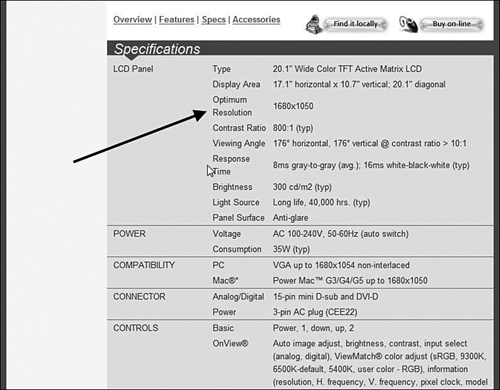If you’re using an LCD flat panel monitor and your
picture looks blurry, put your glasses on. Still blurry? OK, you might
be trying to run the monitor in the wrong resolution.
Each
LCD flat panel monitor has something called a “native” resolution,
which represents the hard-wired number of horizontal and vertical
pixels the LCD can display and has nothing to do with laws passed by
indigenous people.
Think of an LCD as if it
were an egg carton. The “native resolution” of an egg carton is 2×6
eggs. If you put 12 eggs in the carton, all is well. If you try to fit
14 eggs in the carton, it can get messy or the cover won’t close. If
you put 10 eggs in a 12-slot carton, there are empty slots, and
stretching 10 eggs to fill 12 holes is not a good idea unless you’re an
omelet fan.
So, you want to match the
number of pixels output from a computer to an LCD display native
resolution—that is, the number of pixels the display was optimally
designed for.
If you choose a different
resolution, Vista may try to stretch or compress the picture over the
actual number of pixels available on your LCD screen. And this can look
awful. Either the picture won’t be crisp, or it may center a smaller
resolution in the middle of the display surrounded by a black border.
...And My Desktop Is Bigger Than the Screen
In
some cases, if you choose a resolution that is too large for the LCD
panel, the desktop will scroll around as you move your mouse. It’s sort
of like peering at the Mona Lisa through a camera when you are too
close. You have to move the camera around to see the whole smiling
image.
Tip
While
you’re in the Display Properties dialog box, get some helpful tips on
how to make your display look better by clicking on the How Do I Get
the Best Display? link at the bottom-left. It brings up a help screen
that shows you how to get best results for LCD and CRT screens by
setting the resolution, refresh rate, and color settings. |
The Fix: Adjust the Resolution
To fix one or the other of these conditions, match simply the resolution of posting to the indigenous resolution of the notice board with liquid crystals. To discover what i.e., the characteristics of the monitor check, behind its handbook or on the Web site of the manufacturer (see Figure 1).
